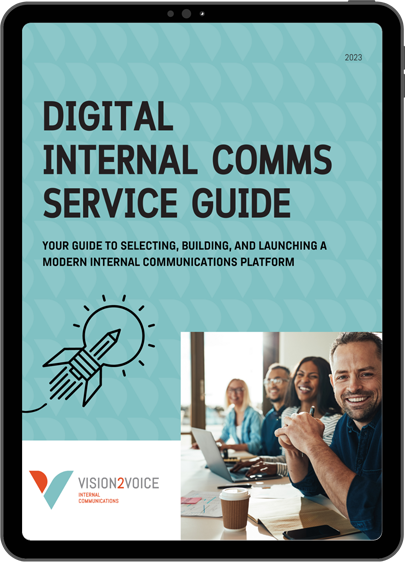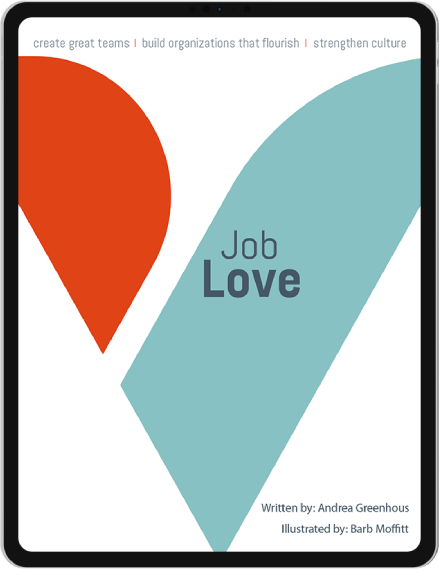As organizations reimagine the role of the office, many are making significant changes to the places and spaces where employees work together. Some are upgrading, some are downsizing, and others are renovating and redecorating. Regardless of your office real estate strategy or where you are in your return-to-office journey, communication is essential to success.
The critical role of communication
Aside from communicating the logistics of a move or renovation, developing a comprehensive communication strategy to support a significant change has many benefits.
Communication will:
- Create buy-in and support for the change by involving employees in reimagining the office space.
- Help leaders make real estate decisions with a vision for the employee experience and understanding of what employees need to be happy and productive.
- Reduce uncertainty and clarify expectations about how employees will use and experience the office space.
- Move (pardon the pun) employees to action at key phases of the process, such as office clean-up and packing.
- Build excitement about the new space and share important features such as sustainability, well-being, and amenities.
- Help employees adjust to the new space and adopt new ways of working.
THE PLAYBOOK
Our team has helped several clients with major building moves or office renovations. Through this work, we have developed a 10 11-step playbook we’ve used to support clients through their journey to a reimagined space. We’re excited to share our process with you through three phases of a move or renovation: reimagining your office space and how you work together, the transition where the heavy lifting 🤣 happens, and the final phase when employees settle in and adjust to working in the new space.
Phase 1 – Reimagining your space with a people-first approach
The trick is to begin the work in this phase before a real estate decision has been made.
Step 1 – Develop a strategy for inspiring and involving employees
This first communication strategy should focus on articulating the WHY and involving employees in the WHAT. By involving employees in reimagining how to work together and co-creating a vision for a future workspace, leaders can make more informed real estate decisions and gain buy-in and support for the move.
Step 2 – Create the narrative
In any change, people need to understand the WHY. The move narrative should be part of the story of your organization – where it has been and where it is going. With one organization, we worked with the senior executive leading the move. We articulated his vision and created a change story that was woven into the broader organizational narrative of a new, more dynamic approach to work.
Step 3 – Listen and involve
Create meaningful ways to listen and involve employees throughout the process. For one organization, we created a working group that explored various aspects of the new space. Some topics we covered included collaboration and teamwork, culture and purpose, and health and well-being. Employees had important input that shaped many aspects of the built space (not just the colour of the walls). Interactive town halls, ask anything sections on a dedicated building move page, and managers’ communication packs that prioritized harnessing the input, questions, and ideas of employees are some other examples of how we’ve involved employees in reimagining new office space.
Phase 2 – The transition
Once the real estate decisions have been made, a team will be assembled that likely includes architects, space designers, and a construction team. We’ve worked closely with these teams, bringing a unique perspective and the power of communication to support a successful project. Here are some of the steps in this phase.
Step 4 – Develop a strategy
Whether there are three months to go or three years, develop a communication strategy aligned to the move goals. A strategy demonstrates the focus on communication with the project team and senior leaders and creates alignment around shared goals and outcomes.
Step 5 – Create an implementation plan
Develop a plan that is aligned with the project workback schedules. Identify key stages and dates when employees need to know or do something. While there should be communication at key points in the project, the plan should also include a regular drumbeat of communication. For one client, we created a monthly newsletter that shared insight into the new building, from sustainability features to what people’s workstations would look like. We also featured the employees working on the move and shared photos highlighting the progress.
Step 6 – Develop tailored and intentional campaigns for critical phases
There will be critical phases and dates in any building move or renovation. These will require individual campaigns or, at the very least, more deliberate and focused communication. These might include a clean-up period, packing and preparation, and the move itself.
We had fun with one client creating a campaign to get employees to clean up and clean out their office space and common areas. There are always a few office packrats that have some serious shredding to do and common areas where all the unwanted office supplies are stored. This separate mini-strategy included active and visible leadership from senior executives, contests, and ongoing monitoring of the cleanup.
Step 7 – Support the move itself
In this step, clear communication is critical to helping employees understand what they need to do and when. It’s as simple as creating an email, a move page on the intranet, and a leader’s comms pack to support managers who will be bombarded with a million questions. At this stage, be prepared for last-minute changes and updates!
We have created dedicated move guides that use the employee journey through the move – preparing for the move, packing up, and moving day information all in a clear, well-structured document. These documents have been welcomed by employees and move teams for clear and consistent information.
Phase 3 – After the big office move
This phase is arguably the most important because if you think getting people to clean up their workstations is a challenge, just wait until they are getting settled in and adjusting to the new space!
Step 8 – Make day one memorable
If you have ever travelled to a new city for business or even had a meeting outside of your office, you can relate to the many questions you have when visiting a new space. This stress and uncertainty can be alleviated with clear communication about what to expect in the new building. Our solution is a building welcome guide that provides comprehensive details about the new facility. These welcome guides build pride and excitement in the new building while alleviating some of the first-day jitters. A bonus is that these guides can be used to welcome new employees as part of an onboarding package. We have also created some fun day one communication with specific information and details about what to expect on your first day in the new space.
Step 9 – Help employees settle in
Don’t make the mistake of thinking that communication will no longer be required once the move has happened. In our experience, this is when employees need the most communication to adjust to a new way of working. Equipping managers at this stage is especially important as they work to get their teams back into a routine and focused on doing great work.
Step 10 – Use change-informed communication to help build new habits
Once the boxes are unpacked and everyone has figured out the new coffee machine, there is one last challenge: adjusting to a new way of working. If this is the case, a single email won’t be enough. A change-informed communication strategy can help people adapt and adjust. We’ve found that communicating office etiquette and guidelines is particularly important with more collaboration spaces, increased use of online meetings, and the trend towards more open office environments.
Step 11 – Celebrate success
We wanted to have a 10-step guide, but we couldn’t leave out the celebration! After all that work, it is important to celebrate the successes and this new chapter in your organization’s story. The celebration should include communication that recognizes the hard work of the move team and the flexibility and patience of the employees who have experienced upheaval and change. Finally, don’t forget to highlight what employees love and the benefits of the new space to build pride and begin the next chapter in your organization’s story.
The world of work is changing fast, and nowhere is this more evident than the changing nature of the office. If you are reimagining your office space, consider using our 10-step (sorry, 11-step) roadmap to maximize your investment. If you need a hand, we are here to help!






